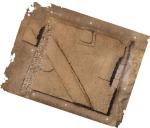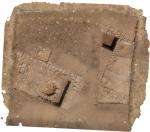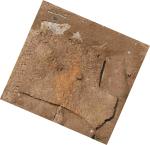Summary (English)
Returning to the field in 2022, the Marzuolo Archaeological Project re-opened Areas 17000 and 20000, previously explored in 2017-2019. The goal was to complete the excavations of the northern rooms in a massive opus reticulatum complex built in the NW zone of the site in the Augustan period. Area 17000 (Room B) yielded evidence of domestic activities (a bronze figurine of Minerva, a bone stilus, etc.) and storage (in situ amphorae) in phase with the blacksmith workshop that occupied Room C. Moreover, phases preceding construction of the opus reticulatum complex were identified for the first time, including a metalworking station and a trench of unknown function, whose materials may produce a more precise date for the complex’s construction. In Area 20000 (Room D), evidence was found to suggest that parts of the complex were reoccupied shortly after its destruction by a fire in the mid-1st century AD. Of particular interest are the discoveries of two successive drains, one of which appears to have been installed when the room functioned as a cella vinaria, and a section of opus spicatum flooring that belonged to the last phases of the room’s occupation.
A new Area, 21000, was opened in the southwestern zone of the site where magnetometery indicated the presence of a second substantial masonry structure on the same alignment as the northern opus reticulatum complex. Excavations confirmed the presence of a second structure with a well-preserved stratigraphy representing periods of occupation and abandonment that date from the 1st century BC to the medieval period. This stratigraphic sequence will help refine the site’s chronology as a whole and adds crucial information about the activities in the Late Roman and Post-Roman phases. The most remarkable discovery of Area 21000, however, was the opening of a well in use in the Roman period. Hitherto no evidence concerning the on-site storage or supply of water had been found.
- Rhodora G. Vennarucci, University of Arkansas
Director
- Rhodora G. Vennarucci, University of Arkansas
Team
- Angela Payne
- Cleo Barbafiera, University of Siena
- Gijs W. Tol, University of Melbourne
- Matteo Faraoni- University of Siena
- Thomas Keep- University of Melbourne
Research Body
- Cornell University (dall’anno 2017)
Funding Body
- Cornell University
- Loeb Classical Library Foundation Grant (PI: Van Oyen)






![Download [PDF]](/excavation/skins/fasti/images/results/download_sml.png)

